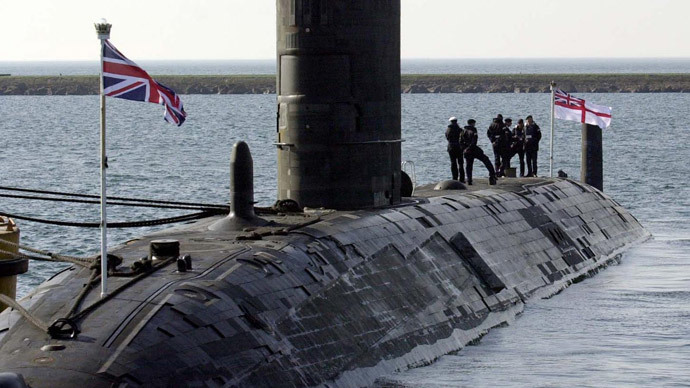Catastrophe averted: How UK nuke sub crew cheated death

The crew of a UK submarine had a close brush with death when an air-conditioning failure caused temperatures to soar, it has emerged. Catastrophe was averted after the submarine dived down 200 meters into cooler waters.
It has been revealed HMS Turbulent was hit by a potentially
disastrous situation while on patrol in the Indian Ocean three
years ago. The vessel’s air conditioning system became clogged,
causing temperatures to rocket to 60C (140F).
"I genuinely thought there was going to be a loss of life on
board,” commanding officer Ryan Ramsey told the Plymouth
Herald, describing how crewmembers were collapsing everywhere,
many still at their work stations.
“It was absolutely terrifying, and I'm not afraid to say I
was scared. I remember looking at a picture of my family quickly
thinking, ‘We need to pull through this.’”
Ramsey said he became desperate after opening the submarine’s
hatches failed to alleviate the crisis situation. Systems had
begun to fail all over the submarine and “every free
space” had been turned into makeshift sickbays to cater for
crew suffering from heat sickness. Ramsey was on the bridge of
the submarine when disaster struck.

“I came down below and I was met with this incredible blast of heat,” Ramsey said, adding that he went to the cabin of the first submariner, whom he found shaking and crying on the floor after collapsing.
Ramsey and the crew could do little to fix the situation as the equipment in the problem areas was too hot to touch. Also, the captain said, the submarine could not return to dock at Fujairah in the United Arab Emirates, as turning up with a broken nuclear vessel could give rise to “political issues.”
“I felt like the world was against us. I was looking up and asking ‘When are you going to give me a break to gain the upper hand here?’ People were crying, and it was all about survival.”
Faced with no other option, Ramsey ordered the submarine to dive into deeper waters. At around 200 meters the temperatures in the submarines began to cool and systems began coming online again.
It turned out the air conditioning system had been bunged up by crustaceans during the vessel’s deployment in Fujairah.
“There’s not a day that goes by that I do not think about what happened. The pain of seeing my crew like that,” said Ramsey who decided to speak about the incident three years after to show “how amazing and incredible the service is.”
The systems failure that occurred on HMS Turbulent was so rare that the Royal Navy has now included the scenario in its submarine training program.















